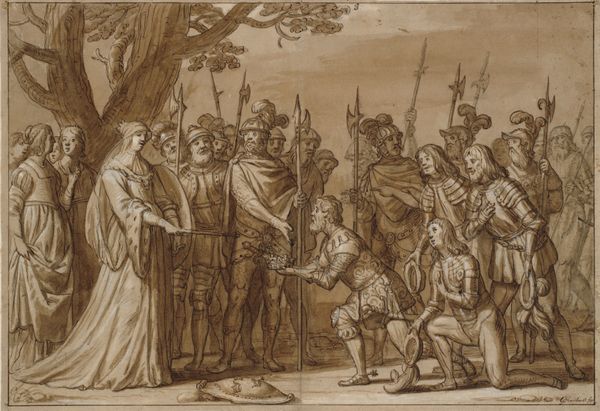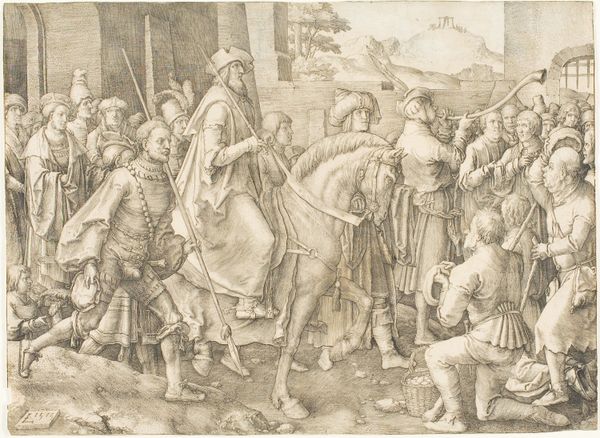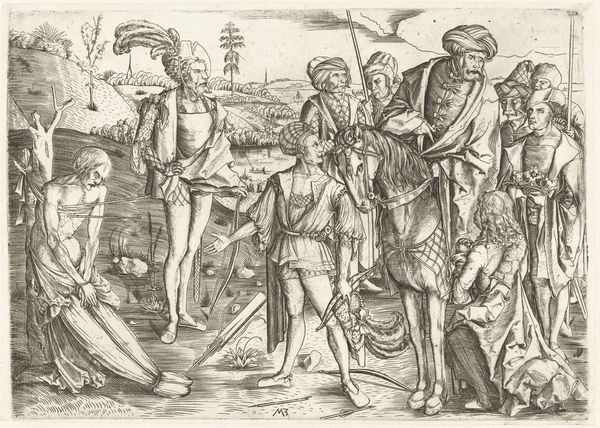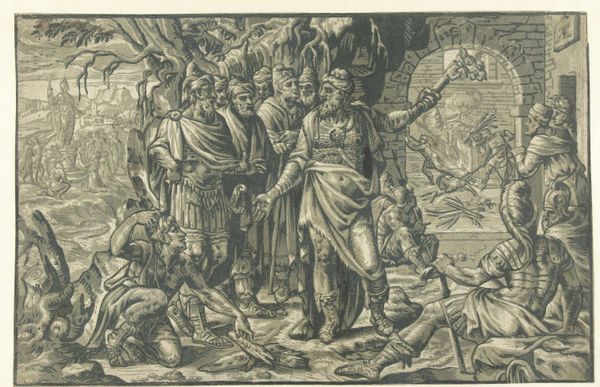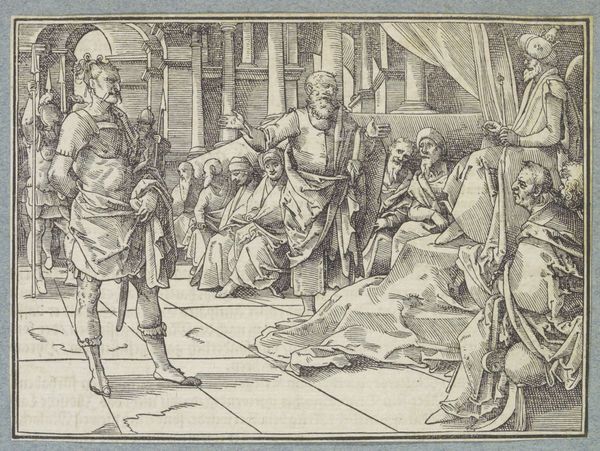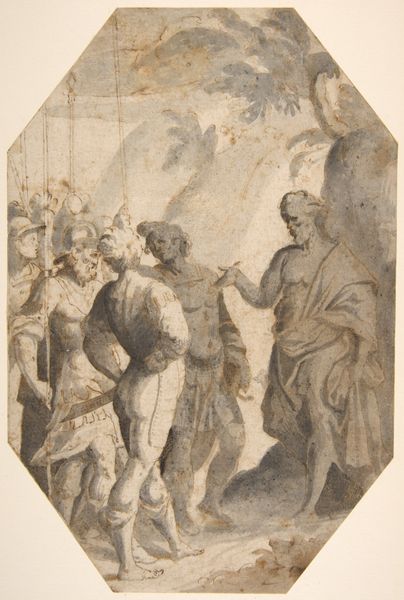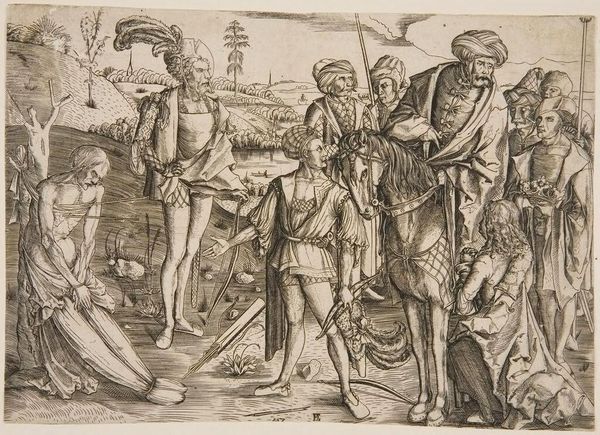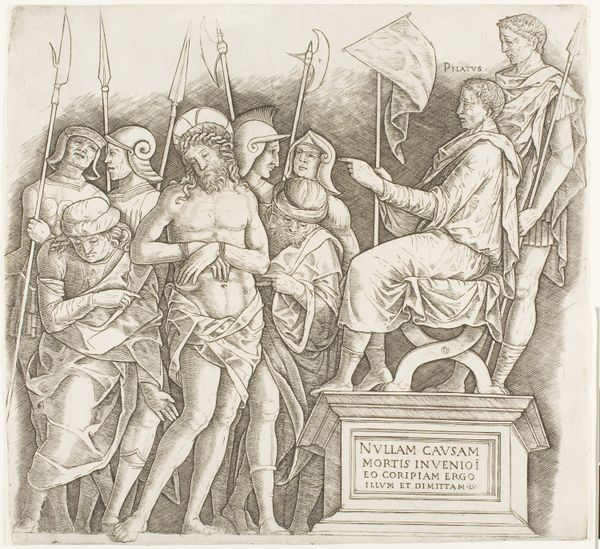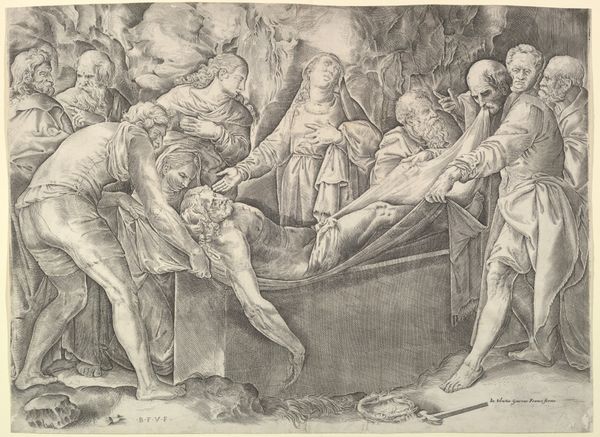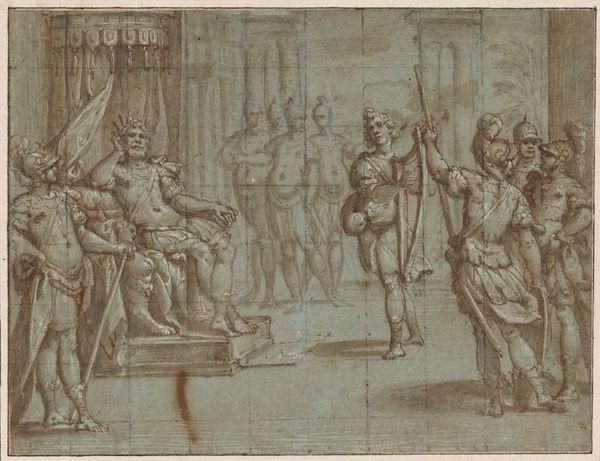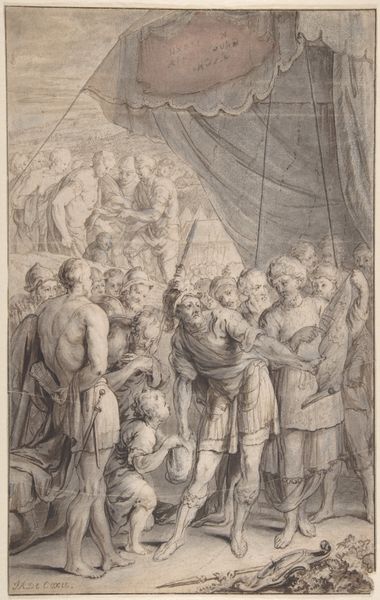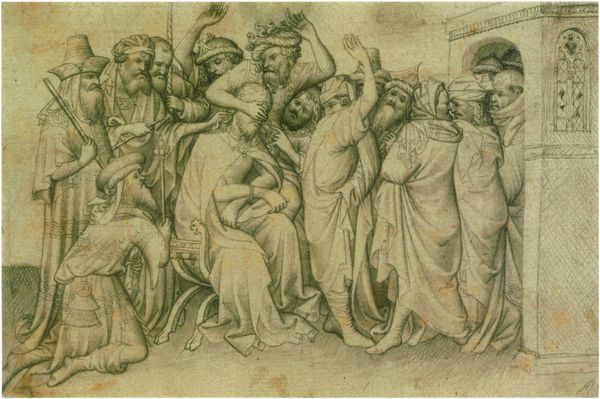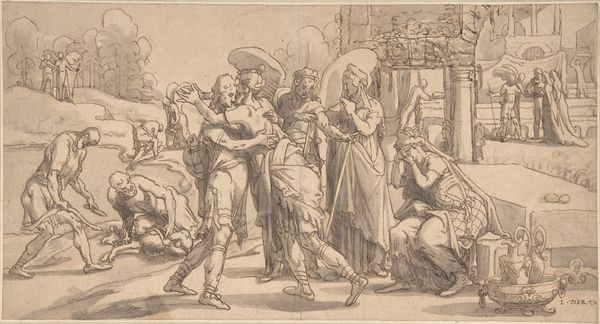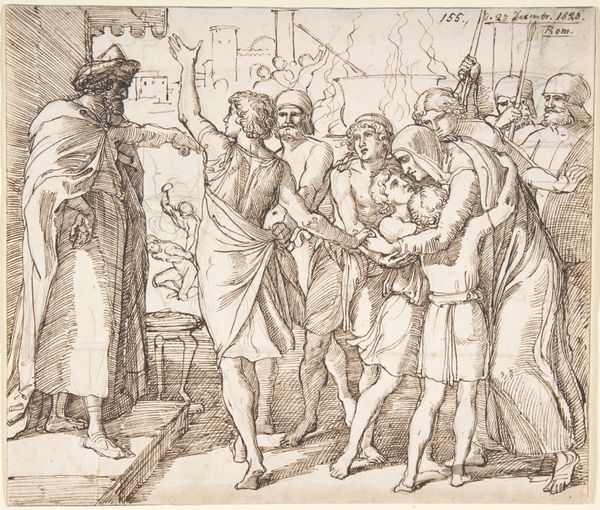
Julius Civilis Having his Hair Cut after the Fall of Vetera, while his Son Kills Some of the Captives 1600 - 1613
0:00
0:00
ottovanveen
Rijksmuseum
painting, oil-paint
#
narrative-art
#
baroque
#
painting
#
oil-paint
#
figuration
#
oil painting
#
flemish
#
history-painting
Dimensions: height 38 cm, width 52 cm
Copyright: Rijks Museum: Open Domain
Otto van Veen painted this oil on panel depicting Julius Civilis in the early 17th century. Van Veen’s painting depicts a scene of violence and subjugation. Julius Civilis, leader of the Batavian rebellion against the Roman Empire, is shown having his hair cut, a symbol of defeat, while his son exacts brutal revenge on captives. Painted in the Netherlands, this work evokes the Dutch struggle for independence from Spain, casting Civilis as a heroic figure of resistance. Yet it also reveals the complexities of national identity and the troubling relationship between freedom and violence. The painting, commissioned for the Dutch States General, aimed to legitimise Dutch revolt against a foreign power. To understand this painting fully, one would need to explore historical texts, political pamphlets, and artistic treatises from the period. By examining the social and institutional contexts in which art is produced, we can better grasp its multifaceted meanings and lasting significance.
Comments
rijksmuseum about 2 years ago
⋮
In 1613, the Dutch parliament (States General) commissioned Otto van Veen to paint twelve paintings depicting the revolt of the Batavians against the Romans in AD 69 and 70. These were displayed in Binnenhof, the central government building in The Hague. In the early years of the Dutch Republic, many compared their own revolt against Spain to the Batavian uprising.
Join the conversation
Join millions of artists and users on Artera today and experience the ultimate creative platform.
